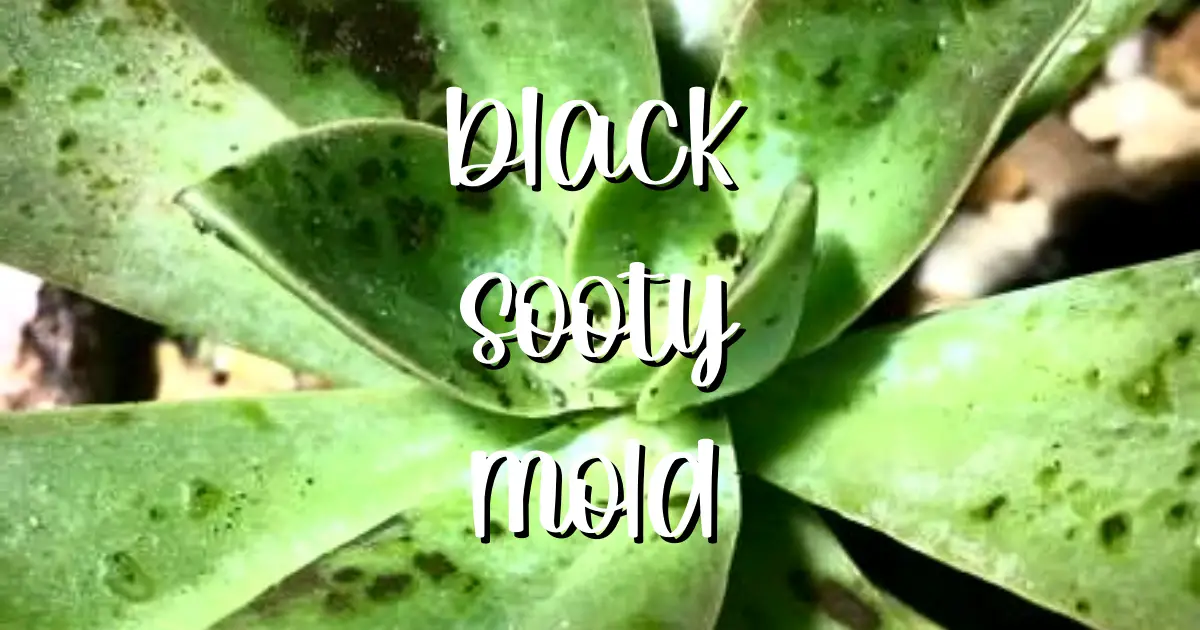If you have noticed a black, sooty substance on your succulent plants, it is likely that they have been affected by a fungus called sooty mold. This fungus typically appears as a black, powdery or sticky substance on the leaves and stems of succulent plants, hindering their growth and affecting their overall appearance. Fortunately, there are several ways to treat sooty mold and prevent it from spreading to other plants in your collection. In this article, we will explore ten effective ways to treat black sooty mold on succulents.
Dig in!
Getting Rid of Black Sooty Mold on Succulents
Black sooty mold is a common fungal disease that affects many plants, including succulents. It appears as black or brown spots on leaves, stems and flowers. Black sooty mold doesn’t directly harm the plant, but it can block sunlight and affect photosynthesis.
The main causes of sooty mold are sap-sucking insects like aphids, mealybugs and scale that secrete a sugary substance called honeydew that the fungus feeds on.
Proper identification, treatment, and prevention are key to managing sooty mold on succulents.
What Causes Sooty Mold on Succulents
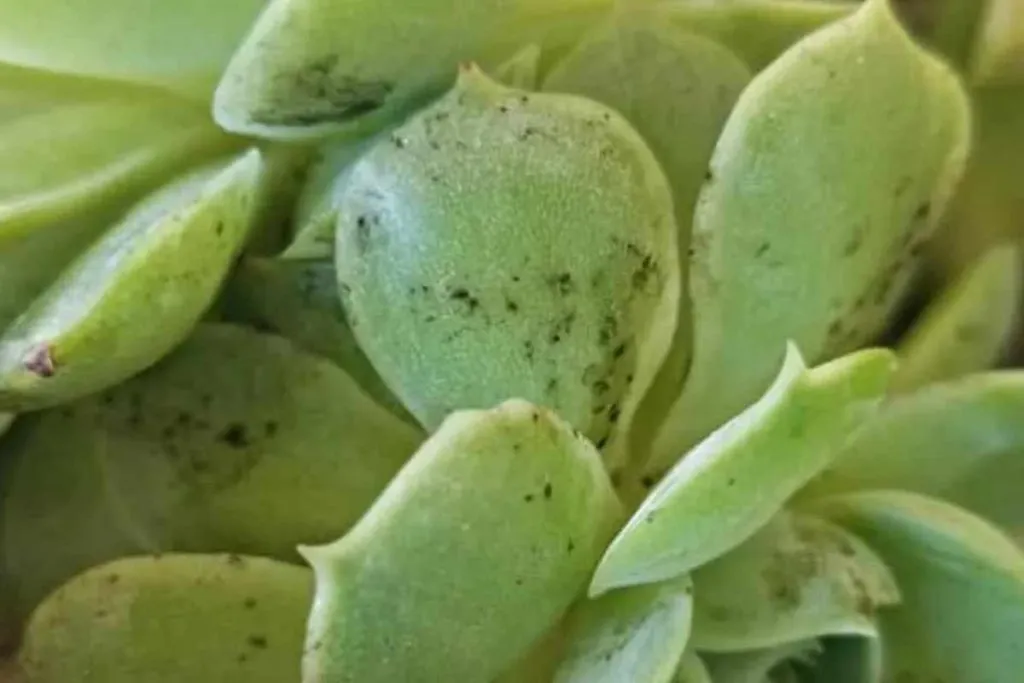
Sap-Sucking Insects
Aphids, mealybugs, soft scale and other piercing-sucking insects extract sap from the plant and excrete excess sugars in the form of honeydew secretions that contain sugars, starches, proteins and amino acids. Sooty mold fungi thrive on these honeydew deposits.
High Humidity
Moist, humid conditions favor the growth of sooty mold. Poor air circulation and crowded plants can create an environment with elevated humidity suitable for fungal growth.
Low Light
Insufficient sunlight stresses succulents, making them more vulnerable to insect infestations and subsequent sooty mold issues.
Nutrient Deficiencies
Succulents lacking key nutrients like nitrogen, manganese and iron have lowered immunity and are more prone to pest and fungal problems.
Overwatering
Excessive soil moisture promotes fungal growth. Soggy soil and standing water provide ideal conditions for sooty mold to develop.
Old or poor quality potting mix
Old soil or a mix that retains too much moisture encourages fungus growth.
Sudden temperature changes
Big swings in day and night temperatures stress the plant and make it vulnerable.
New plants
Bringing home new succulents from a nursery risks introducing pests and fungal spores. Quarantine new plants.
Damaged roots
Root rot due to overwatering hampers the roots’ ability to take up nutrients and weakens the plant.
How to Identify Sooty Mold on Succulents
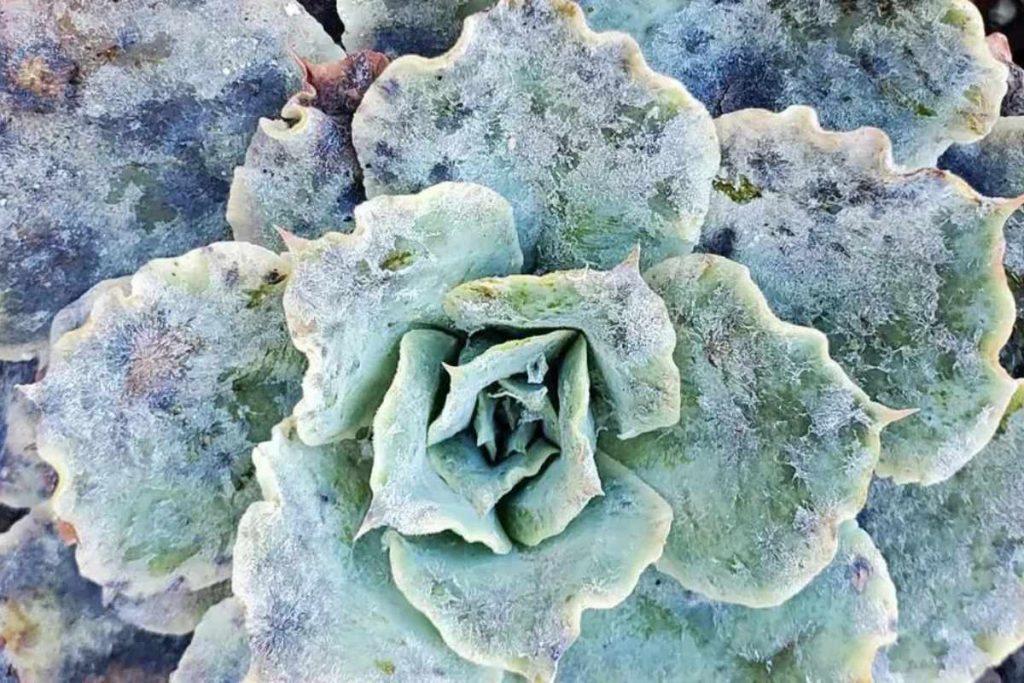
Look for these common symptoms:
Powdery, dark gray or black coating on leaves, stems and flowers
Spreading black patches
Olive green spots in early stages
Stunted or distorted growth
Presence of honeydew or sap-sucking insects like aphids and mealybugs
White outer margin around black spots in some cases
Yellowing or browning leaves
Susceptible Succulent Species
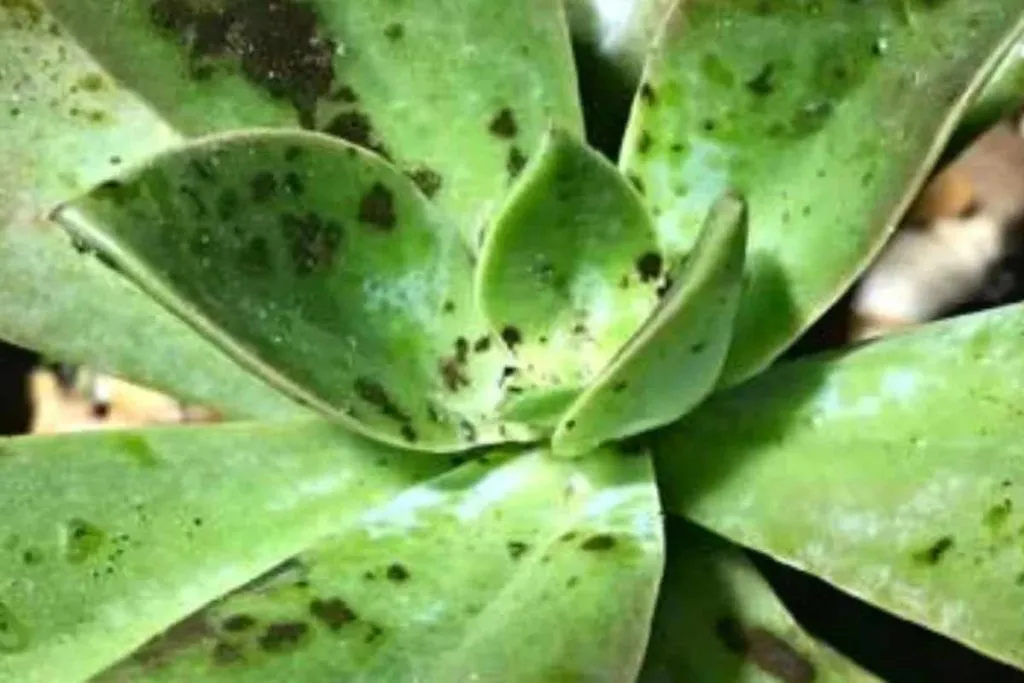
Some succulents are more prone to sooty mold including Echeveria, Aeonium, Sempervivum, Sedum, Senecio, Kalanchoe, Crassula, Cotyledon and Haworthia. Environmental factors like high humidity, poor airflow, crowded planting, and insufficient sunlight increase the risks.
How to Treat Sooty Mold on Succulents
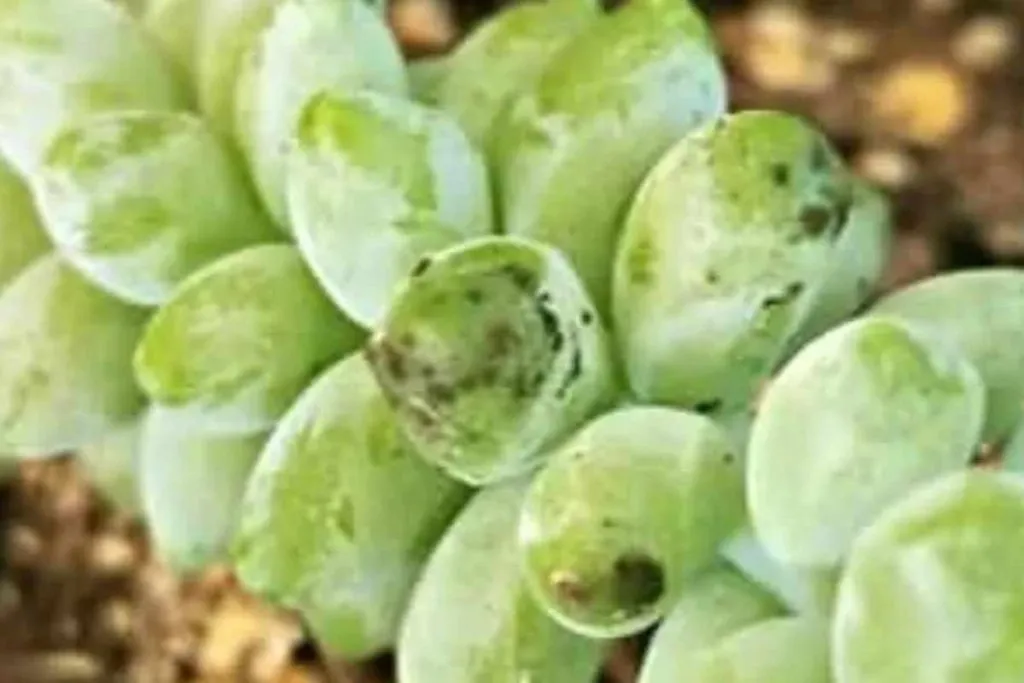
Remove infected parts
Prune off badly affected leaves and stems. Discard debris – do not compost as it can spread to other plants.
Wash away honeydew
Use a strong stream of water to remove sticky honeydew secretions from insects.
Apply insecticidal soap
Spray the affected plant with insecticidal soap to kill sap-sucking bugs and prevent new honeydew deposits.
Use neem oil or copper fungicide (my personal favorite)
Treat the affected plant with neem oil, copper fungicide or sulfur powder to inhibit fungal growth. I’ll link my favorite copper fungicide below.
Increase air flow
Improve circulation around plants with small fans to create an unfavorable environment for fungus.
Fix overwatering issues
Allow soil to dry out between waterings to lower humidity levels.
Give more light
Provide extra hours of sunlight to discourage fungal growth.
Sterilize tools
Disinfect shears and other gardening tools with diluted bleach to prevent spreading mold spores.
Replace infected soil
Remove top 2 inches of potting mix if you think it is contaminated and repot plant in fresh sterile soil.
For severe black sooty mold cases, try systemic insecticides, hydrogen peroxide solutions and removing badly infected plants. Allow several weeks for treatment and prevention efforts to take effect fully.
How to Prevent Black Sooty Mold on Succulents
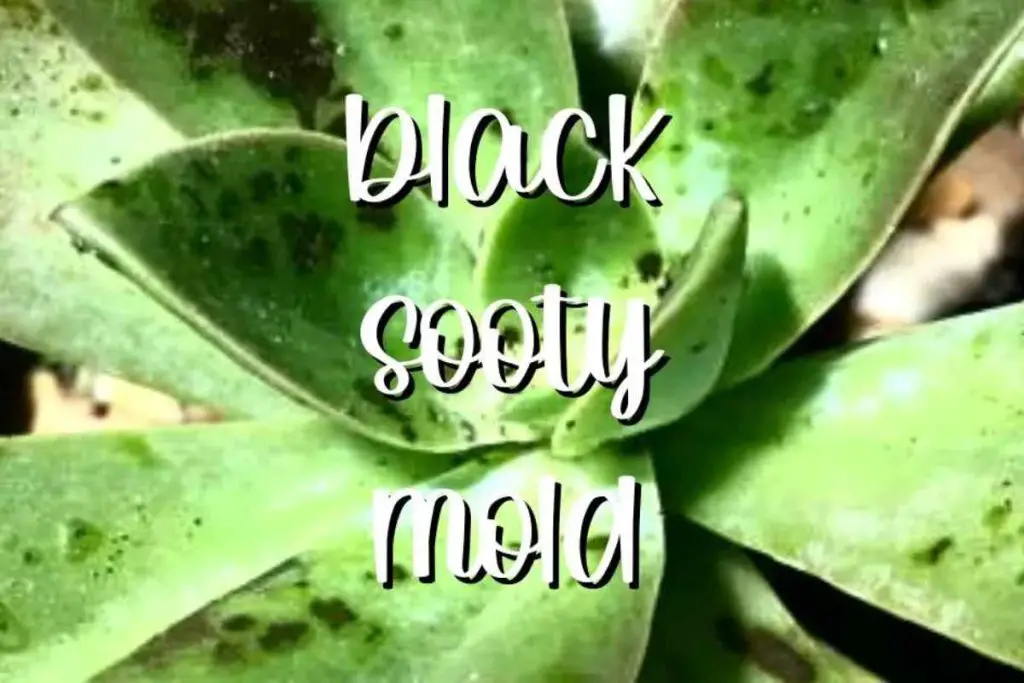
“An ounce of prevention is worth a pound of cure!” – My mom trying to get me to eat my veggies when I was little probably.
Common Sense Care
Inspect weekly for early signs of pests
Improve airflow by spacing plants
Avoid overhead watering and wetting leaves
Keep humidity levels below 50%
Provide 6 hours of direct sunlight daily
Use well-draining cactus soil
Sterilize pots and tools
Remove fallen plant debris promptly
Growing Conditions
Morning sunlight to dry dew rapidly
Open arrangements that allow air circulation
Ventilation from fans or open vents
Low density planting to reduce humidity
Why Black Sooty Mold is Bad for Succulents
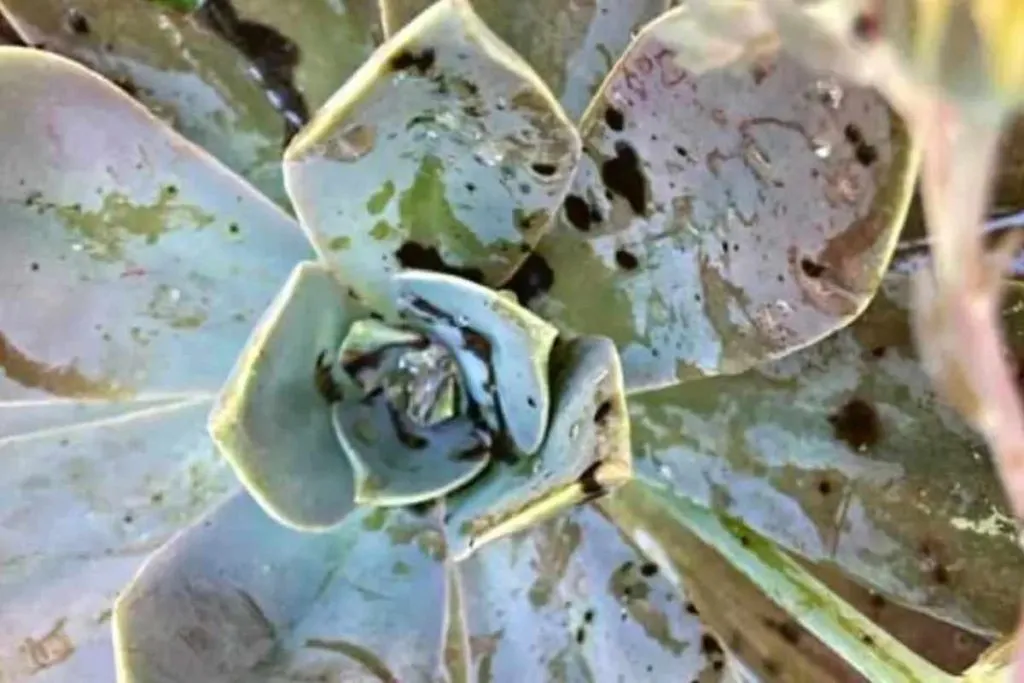
It Just Looks Bad
The black moldy spots and coating mars the natural beauty of succulents. It obscures the colors and textures of leaves.
Slows Growth
Black sooty mold blocks sunlight from reaching the leaves, slowing photosynthesis. This stunts growth over time.
Lowers immunity
The fungus draws energy away from normal plant functions, leaving it vulnerable to other problems.
Leaf drop
Severely affected leaves may yellow, wither and drop prematurely.
Death
In extreme cases, the succulent may collapse entirely if the fungus persists untreated for too long.
How to Sterilize Your Gardening Tools
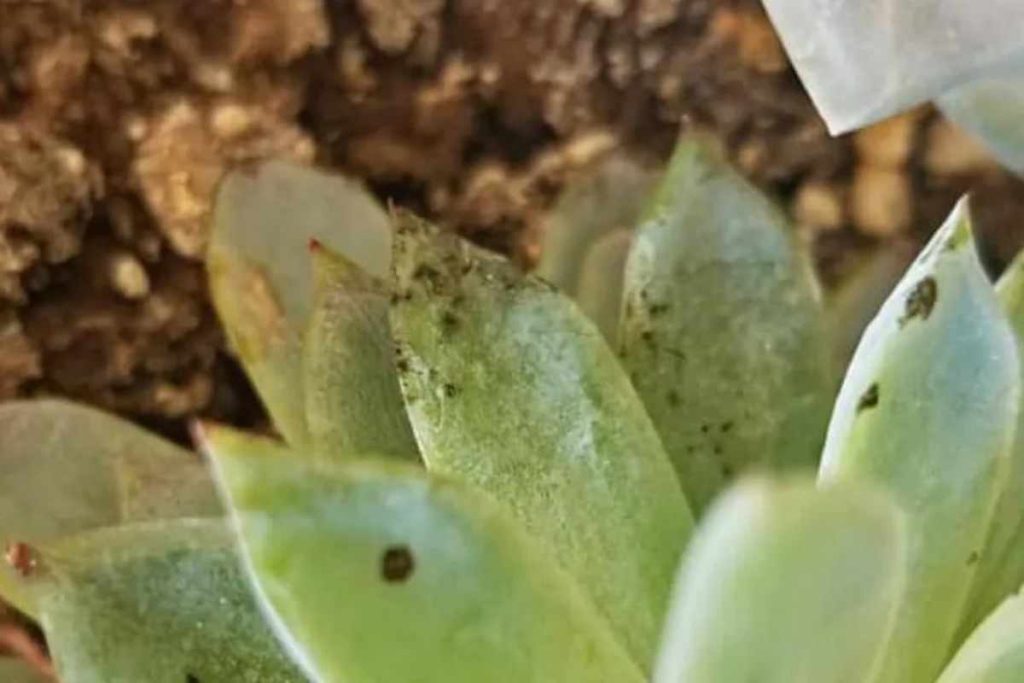
Here are some effective methods for sterilizing tools to prevent spreading sooty mold spores:
Bleach solution
Make a 10% bleach and 90% water solution. Soak tools for at least 5 minutes, then rinse and dry well. The chlorine will kill fungal spores and bacteria. I just have a 5 gallon bucket with a lid that I keep my diluted bleach solution in under my potting bench so that I can dunk my tools in when I’m not using them.
Alcohol
Wipe down tool surfaces with 70% isopropyl alcohol using a clean rag. Allows for quick disinfection. I always have a little spray bottle of this on hand to kill mealies when I see them.
Hydrogen peroxide
3% household hydrogen peroxide solution kills fungal spores through oxidation. Soak tools briefly, then rinse and wipe dry. Just like the rubbing alcohol, I always have some of this on hand.
Vinegar
The acetic acid in vinegar is an effective antifungal. Make a 10% vinegar solution and dip tools for a few minutes before rinsing.
Boiling water
Heat can kill both bacteria and fungi. Boil metal tools like pruners for 10 minutes to fully disinfect and dry well before use.
Flaming
Pass metal tools quickly through a flame, taking care not to overheat them. This burns off fungal spores.
UV light
Use a UV sanitizing wand or box to expose tools to germicidal ultraviolet rays that destroy fungus and bacteria.
Be sure to scrub off any visible debris first. Disinfect between each plant and whenever tools come into contact with diseased plants or infected soil to stop sooty mold in its tracks. Consistency is key!
With diligent monitoring, preventative care tailored to susceptible species, and prompt treatment at first signs of infestation, black sooty mold can be successfully managed. Consistency is really important to support your succulent’s health and beauty without unsightly fungus.

